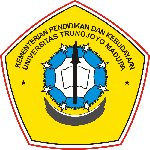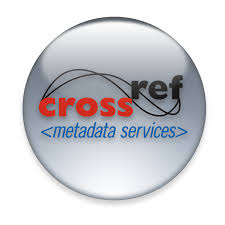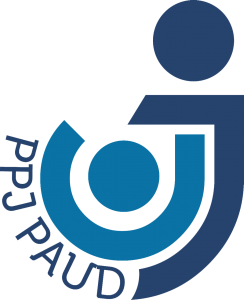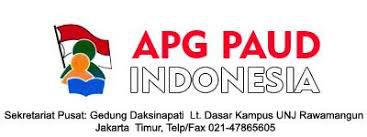Efektivitas Pelatihan Print Referencing Guna Meningkatkan Ketrampilan Pengajaran Literasi Dini pada Guru Prasekolah
Abstract
Keywords
Full Text:
PDFReferences
Baker, C. (2013). Print-Referencing: A Key to Interactive Shared Reading. Dimensions of Early Childhood. Vol. 41, No.1. 25-34.
Bus, A. G.; Van I. M. H.; & Pellegrini, A. D. (1995). Joint book reading makes for success in learning to read: A meta-analysis on intergenerational transmission of literacy. Review of Educational Research. 65. 1-21.
Craig, R L. (1987). Training and Developmental Handbook A Guide to Human Resource Development. New York: Mcgraw Hill-Book Company.
Dennis, R. L; & Horn, E. (2011). Strategies fo Supporting Early Literacy Development: Young Exceptional Children. SAGEpub.
Doctoroff, G. L.; Greer, J. A.; Arnold, D. H. (2006). The Relationship Between Social Behavior And Emergent Literacy Among Preschool Boys and Girls. Applied Developmental Psychology, 27, 1-13.
Eccles, J.; & Wigfield, A. (2002). Motivational Beliefs, Values, and Goals. Annu. Rev. Psychology. 53:109–32. University of Michigan.
Justice, L. M.; & Ezell, H. K. (2004). Print Referencing: An Emergent Literacy Enhancement Strategy and its Clinical Applications. Language, Speech, And Hearing Services In Schools. Vol. 35. 185–193. April 2004. American Speech-Language-Hearing Association.
Justice, L. M.; Pullen, P. C. (2003). Promising Interventions for Promoting Emergent Literacy Skills: Three Evidence-Based Approaches. Early Childhood Special Education, 23(3), 99-113.
Kirkpatrick, D. (2009). Evaluating Training Programs. Berrett-Koehler Publishers.
Lane, H. B; & Wright, T. L. (2007). Maximizing the effectiveness of read-alouds. The Reading Teacher, 60(7), 668-675.
Lonigan, C. J. (2004). Emergent literacy skills and family literacy. In B. Wasik (Ed.), Handbook of family literacy (pp. 57-82). Mahwah, NJ: Erlbaum.
Lonigan, C. J.; & Shanahan, T. (2011). Executive Summary: Developing Early Literacy: Report of The National Early Literacy Panel. National Center for Early Literacy.
Naparalla, T. A. (2002). Parent Training of Print Referencing Behaviors During Shared Book Reading And Emergent Literacy Skills of Preschool Children. Tesis, Human Potential Performance Communication Disorders, Truman State University. Tidak Diterbitkan.
Neuman, W. L. (1994). Social Research Methods. Qualitative, and Quantitative Approaches. Second Edition. America: Allyn & Bacon.
Pullen, P. C.; & Justice, L. M. (2003). Enhancing Phonological Awareness, Print Awareness, and Oral Language Skills in Preschool Children. Intervention In School And Clinic. Vol. 39, No. 2, November 2003 (Pp. 87–98).
Roskos, K. A., et al. (2003). The Essentials of Early Literacy Instruction. National Association for the Education of Young Children. Ohio.
Santrock, J. W. (2002). Life Span Development: Perkembangan Masa Hidup, Edisi 5 Jilid 1. Jakarta: Erlangga.
Sattler, J. (2002). Assesment of children: Behavioral science. Canada: John Wiley & Sons, Inc.
Seniati, L.; Yulianto, A.; & Setiadi, B. N. (2005). Psikologi Eksperimen. Jakarta: PT Indeks Kelompok Gramedia.
Slameto. (2010). Belajar dan Faktor-faktor yang Mempengaruhinya. Jakarta: Rineka Cipta.
Sugiyono. (2007). Metode Penelitian Kuantitatif, Kualitatif, dan R & D. Bandung:Penerbit Alfabeta.
Whitehurst, G. J.; & Lonigan, C. J. (1998). Child Development and Emergent Literacy. Child Development, 69 (3), 848-872.
Widhiarso, W. (2007). SPSS untuk Psikologi. Yogyakarta: Fakultas Psikologi UGM.
Zygouris-Coe, V. (2001). Emergent Literacy. Florida: Florida Literacy and Reading Excellence Center. University of Central Florida.
DOI: https://doi.org/10.21107/pgpaudtrunojoyo.v1i2.3559
Refbacks
- There are currently no refbacks.
Copyright (c) 2014 Karisma Riskinanti

This work is licensed under a Creative Commons Attribution 4.0 International License.
Diterbitkan oleh:

Program Studi Pendidikan Guru Pendidikan Anak Usia Dini, Fakultas Ilmu Pendidikan
Universitas Trunojoyo Madura.
Jl. Raya Telang PO BOX 2 Kamal, Bangkalan, Jawa Timur 69162
Telp. (031)3014239/ Fax. (031)3011506









